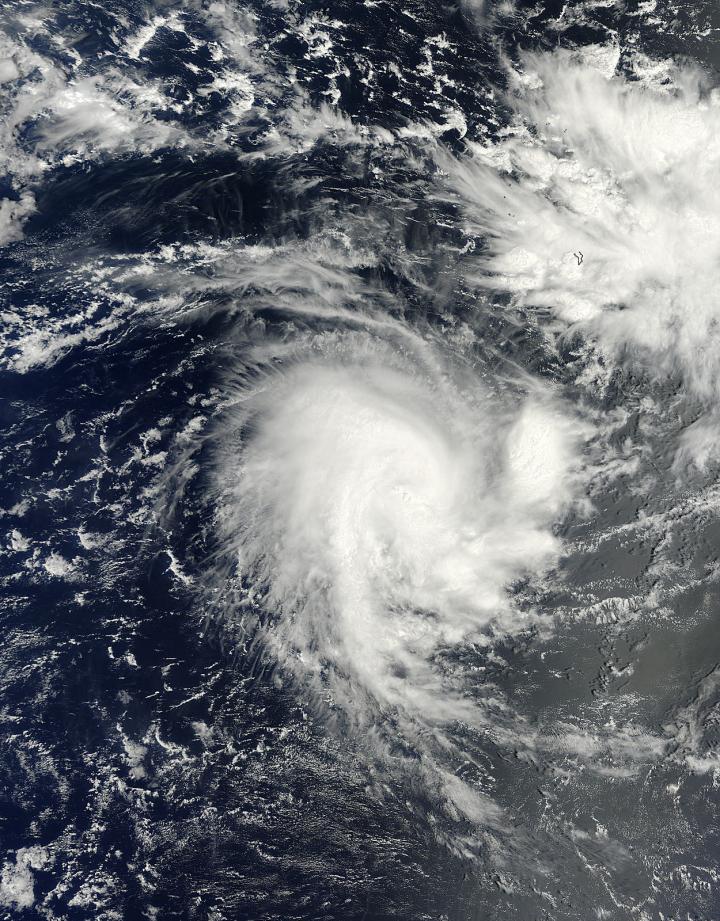NASA sees Tropical Cyclone Adjali develop a tail

This visible image of Tropical Storm Adjali was taken on Nov. 18 at 05:35 UTC from the MODIS instrument aboard NASA's Terra satellite. Credit: NRL/NOAA/NASA
The Moderate Resolution Imaging Spectroradiometer, or MODIS instrument that flies aboard NASA's Terra satellite took a visible picture of Tropical Storm Adjali on Nov. 18 at 05:35 UTC (12:35 a.m. EST).
The MODIS image showed a concentration of strong storms around the center of Adjali's circulation and a band of thunderstorms extending south of the center, resembling a “tail.”
On Nov. 18, the Joint Typhoon Warning Center (JTWC) noted that bands of thunderstorms spiraling into the low-level center appeared to be weakening on microwave satellite imagery.
By 0900 UTC (4 a.m. EDT), Adjali's maximum sustained winds were near 60 knots (69/0 mph/111 kph). It was centered near 11.2 south latitude and 70.0 east longitude, about 279 nautical miles (321.1 miles/516.7 km) southwest of Diego Garcia.
Diego Garcia is an island in the central Indian Ocean, and is part of the British Indian Ocean Territory.
Adjali had changed directions since Nov. 17 and was now moving to the southwest at 9 knots (10.3 mph/16.6 kph). Forecasters at JTWC now expect the storm to maintain intensity or slightly weaken over the next day.
After that time, JTWC forecasters expect Adjali to weaken to a depression as it moves through cooler waters.
Media Contact
More Information:
http://www.nasa.govAll latest news from the category: Earth Sciences
Earth Sciences (also referred to as Geosciences), which deals with basic issues surrounding our planet, plays a vital role in the area of energy and raw materials supply.
Earth Sciences comprises subjects such as geology, geography, geological informatics, paleontology, mineralogy, petrography, crystallography, geophysics, geodesy, glaciology, cartography, photogrammetry, meteorology and seismology, early-warning systems, earthquake research and polar research.
Newest articles

High-energy-density aqueous battery based on halogen multi-electron transfer
Traditional non-aqueous lithium-ion batteries have a high energy density, but their safety is compromised due to the flammable organic electrolytes they utilize. Aqueous batteries use water as the solvent for…

First-ever combined heart pump and pig kidney transplant
…gives new hope to patient with terminal illness. Surgeons at NYU Langone Health performed the first-ever combined mechanical heart pump and gene-edited pig kidney transplant surgery in a 54-year-old woman…

Biophysics: Testing how well biomarkers work
LMU researchers have developed a method to determine how reliably target proteins can be labeled using super-resolution fluorescence microscopy. Modern microscopy techniques make it possible to examine the inner workings…





















